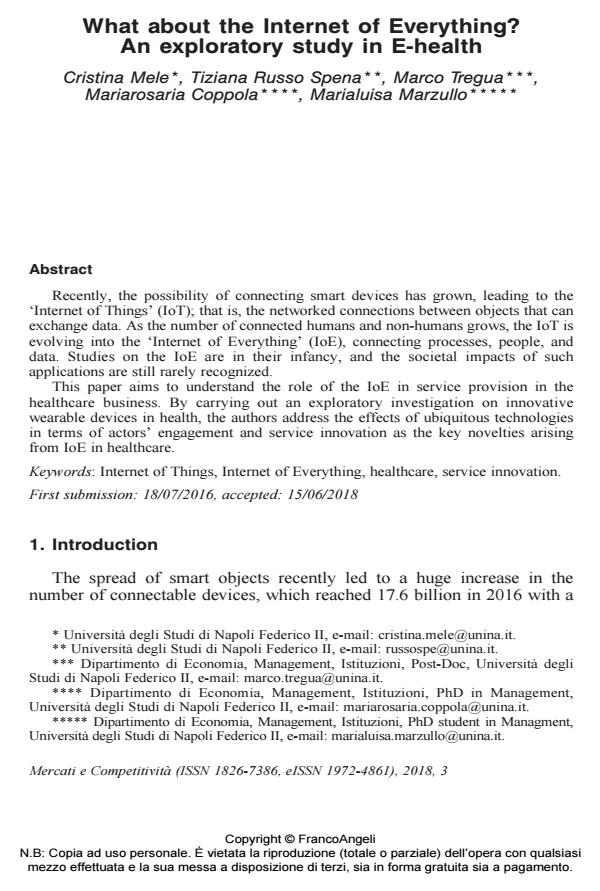What about the Internet of Everything? An exploratory study in E-health
Journal title MERCATI & COMPETITIVITÀ
Author/s Cristina Mele, Tiziana Russo Spena, Marco Tregua, Mariarosaria Coppola, Marialuisa Marzullo
Publishing Year 2018 Issue 2018/3
Language English Pages 23 P. 87-109 File size 115 KB
DOI 10.3280/MC2018-003006
DOI is like a bar code for intellectual property: to have more infomation
click here
Below, you can see the article first page
If you want to buy this article in PDF format, you can do it, following the instructions to buy download credits

FrancoAngeli is member of Publishers International Linking Association, Inc (PILA), a not-for-profit association which run the CrossRef service enabling links to and from online scholarly content.
Recently, the possibility of connecting smart devices has grown, leading to the ‘Internet of Things’ (IoT); that is, the networked connections between objects that can exchange data. As the number of connected humans and non-humans grows, the IoT is evolving into the ‘Internet of Everything’ (IoE), connecting processes, people, and data. Studies on the IoE are in their infancy, and the societal impacts of such applications are still rarely recognized. This paper aims to understand the role of the IoE in service provision in the healthcare business. By carrying out an exploratory investigation on innovative wearable devices in health, the authors address the effects of ubiquitous technologies in terms of actors’ engagement and service innovation as the key novelties arising from IoE in healthcare.
Keywords: Internet of Things, Internet of Everything, healthcare, service innovation.
Cristina Mele, Tiziana Russo Spena, Marco Tregua, Mariarosaria Coppola, Marialuisa Marzullo, What about the Internet of Everything? An exploratory study in E-health in "MERCATI & COMPETITIVITÀ" 3/2018, pp 87-109, DOI: 10.3280/MC2018-003006